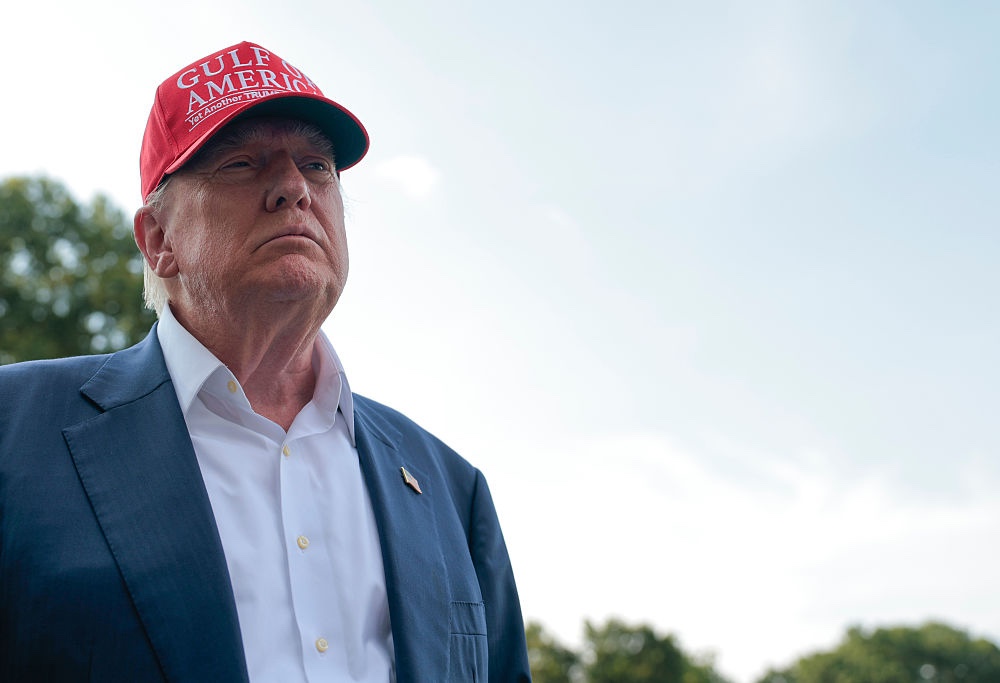Donald Trump’s Immigration Clampdown Is Hurting the Economy
Fed chair Jerome Powell announced a quarter-point interest rate cut last week in an effort to prevent an economic slowdown. But a primary driver of the current crisis is Donald Trump’s brutal immigration policy.

Donald Trump’s immigration restrictions are projected to impose a two to five times larger “cost” on American workers and firms than tariffs. (Anna Moneymaker / Getty Images)
The Federal Reserve announced a quarter-point interest rate cut on Wednesday last week and signaled the possibility of two additional cuts later this year. To move closer to a neutral policy stance, the Fed will also continue reducing its holdings of government Treasury debt and mortgage-backed bonds through a process known as quantitative tightening, which drains liquidity from the financial system to push long-term interest rates back toward the Fed’s targets. These measures aim to provide the US labor market with a short-term boost as growth slows, a concern that currently outweighs worries about inflation that had caused the Fed to drive up rates in the aftermath of the pandemic. In a relatively rare acknowledgment of White House policy, Chair Jerome Powell directly attributed much of the labor market slowdown to Donald Trump’s hard-line immigration measures.
He described the US economy as being in a “curious balance.” “Typically, when we say things are in balance that sounds good but in this case the balance is because both supply and demand have come down quite sharply.” Powell claimed that this shift “has more to do with immigration than tariffs.”
This assessment aligns with economic research. Studies show that deportations can shrink GDP, reduce overall employment for American workers, depress wages, drain local and state tax revenues, and raise inflation. Trump’s immigration restrictions are projected to impose a two to five times larger “cost” on American workers and firms than tariffs. Put simply, the US economy is more dependent on foreign workers than foreign imports.
The supply of workers is likely shrinking thanks to three main factors: Deportations and self-deportations; a reduction in the number of legal and undocumented migrants; and the narrowing of legal pathways for non-naturalized citizens to work safely and with dignity in the United States. On top of this, labor demand is cooling as labor force participation declines and consumption slows. The simultaneous contraction of supply and demand is unusual and concerning.
Beyond the clear devastation to immigrant communities, Trump’s clampdown will have two consequences for the broader economy. First, unemployment, fewer jobs, weaker wage growth, and inflationary pressures disproportionately affect young, minority, and lower-skilled workers. Powell acknowledged that minority unemployment is climbing, youth are more vulnerable to economic cycles, and part of the recent decline in labor-force participation is cyclical as discouraged workers stop looking for jobs, rather than the gradual aging of the population. Combined with slower payroll growth, these indicators show a labor market softening at the margins, particularly for those suffering from economic precarity.
Second, while consumer spending “remains elevated” according to Powell, the Fed chair also admitted it is “skewed towards higher-earning consumers” with high activity in sectors such as “AI build out and corporate investment.” In his speech last Wednesday, Powell did not distinguish between who is spending, because “nonetheless it’s spending.” Yet the top 10 percent of households now account for more than half of aggregate expenditures. This reflects an extremely concentrated reliance on elites to sustain already stagnating growth in a way that is historically lopsided.
Economic research shows that low-income households consume a higher proportion of their income than their wealthy counterparts. When resources shift away from these households toward wealthier savers and investors, aggregate demand is suppressed because lower-income families spend a larger share of their income. The spending that is lost on the borrower’s side is only imperfectly offset by the higher savings of the wealthy. This depressed demand lowers the “natural” interest rate, or the rate at which savings and investment are in balance.
In other words, weaker consumption creates an excess supply of savings relative to demand, and interest rates must remain persistently low. But prolonged low rates, in turn, push investors toward more financialized assets that are better able to offer them a return. This can inflate fragile bubbles in areas like the AI sector, which, if they burst, could destabilize markets, causing firms to abruptly pull investments and lay off workers, driving up unemployment and hitting vulnerable households the hardest.
This also threatens to reinforce what economists have called a “K-shaped recovery” where those with financial assets benefit from easier credit and higher stock price, while low- and middle-class families face the brunt of inflation, stagnating wages, and fewer new jobs.
The Fed is acting in an extremely uncertain environment. Powell himself has emphasized that there are no “risk-free” paths forward for the bank. In this paradigm, cutting rates may cushion some of the current downside risks to employment and reassure markets. But monetary policy has limits. It cannot transform the structural pressures created by restrictive immigration policies and unbridled inequality. Trump’s appointee to the Fed, Stephen Miran, especially overstates the efficacy of aggressive monetary policy to pursue the illusion of short-term relief.
Community and political resistance to Trump’s authoritarian immigration regime, combined with redistributive fiscal policies that strengthen protections for precarious laborers and transfer money to families in need, will do far more to stabilize growth than interest rate tweaks. Powell’s cautious comments hint at the real story: the fight against deportation, inequality, and underemployment are inextricably linked. Monetary policy as it exists can buy time, but it cannot rebuild labor supply, reverse exclusionary policies, or rebalance economic injustice.